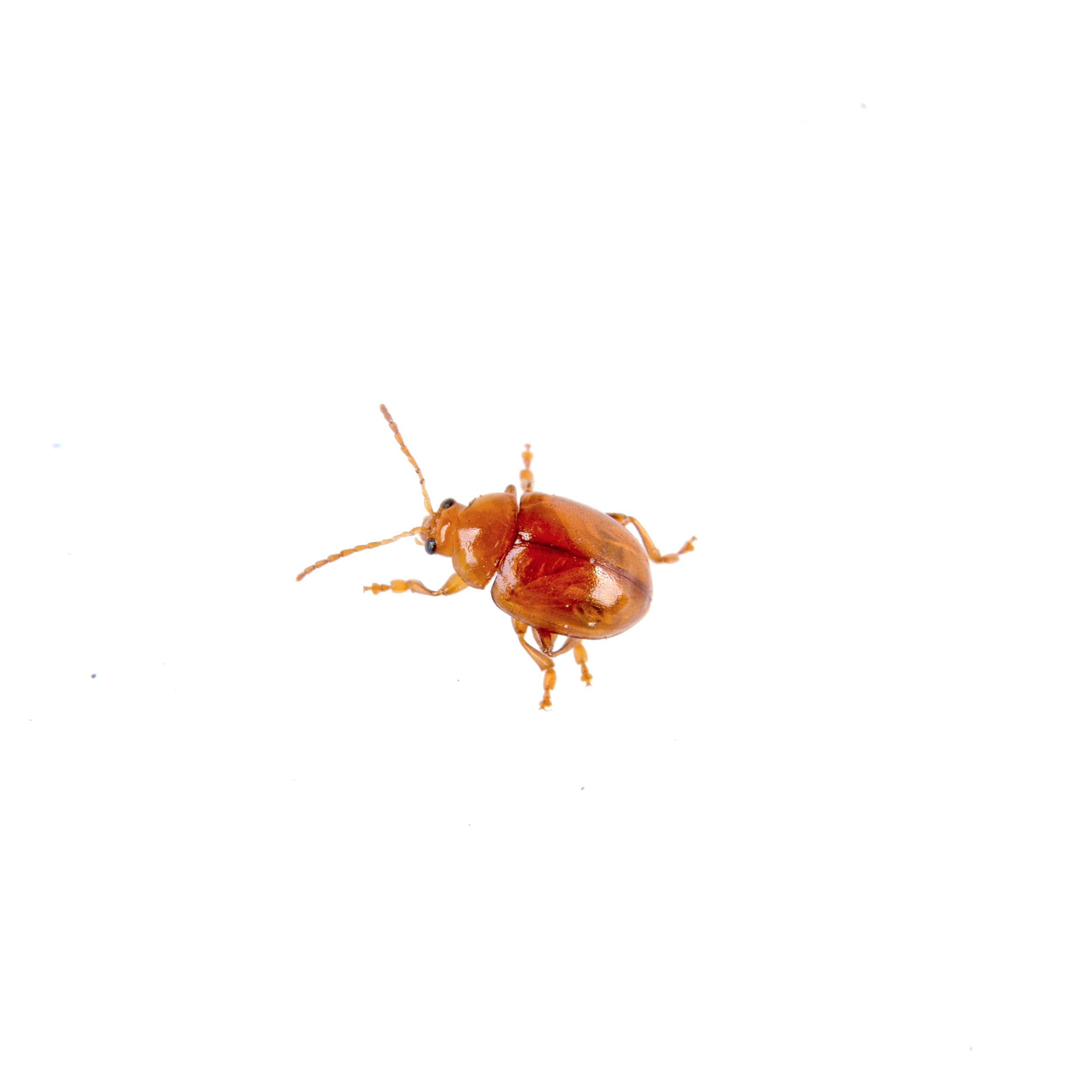Bed Bugs
Brief history and resurgence of bed bugs
Bed bugs, those pesky little bloodsuckers, have been around for centuries. These nocturnal insects have plagued humans since ancient times.
Records show that bed bugs were even mentioned in ancient Greek and Roman literature! However, after World War II, with the advent of effective insecticides like DDT, bed bug populations declined significantly in developed countries.
It seemed like we had finally won the battle against these unwelcome houseguests. But alas!
Bed bugs made a grand comeback in the late 1990s. The reasons behind this resurgence find bed bugs are multifaceted.
Increased international travel, bans on certain pesticides due to environmental concerns, and their ability to develop resistance against insecticides have all contributed to their comeback. Today, no place is immune from these bloodthirsty critters – from luxurious five-star hotels to humble homes.
Embark on a journey through our comprehensive bed bug control and treatment services! Uncover the power of our expert solutions in effectively combating your bed bug infestation. Click here to delve into the depths of our professional bed bug control and treatment services and expand your knowledge!
Physical characteristics and behavior of bed bugs
To identify a bed bug infestation or prevent one from happening, it’s crucial to understand the physical characteristics and behavior of these notorious creatures. Adult bed bugs are typically reddish-brown and about the size of an apple seed (around 5-7 mm long).
They have flat oval bodies that allow them to hide easily in tiny cracks or crevices during daylight hours. Bed bugs are masters of stealth and nocturnal feeding.
At night when you’re cozying up for some sleep, they venture out from their hiding spots (usually within a few feet of where humans sleep) and feed on your blood using their elongated mouthparts called proboscis. They require blood meals at least once every few weeks for reproduction.
While it’s mainly human blood they seek out for sustenance, they can also feed on other warm-blooded animals if necessary. These persistent pests can survive for several months without feeding, making them difficult to eradicate.
Their ability to hide in unexpected places, such as behind picture frames or in the seams of mattresses or upholstered furniture, only adds to the challenge of bed bug control and prevention. Remember, a comprehensive understanding of bed bugs and their behavior is crucial when it comes to preventing infestations.
Stay tuned as we delve into effective bed bug control and prevention tips that will help you protect your home from these unwelcome intruders. Check out this useful resource: How to Avoid Bed Bugs When Buying Used Furniture
Identifying Bed Bug Infestations
Tips for Preventing Bed Bug Infestations in Your Home
Protecting your home from bed bug infestations is essential for maintaining a peaceful and healthy living environment. Our article on tips for preventing bed bug infestations in your home offers valuable insights and practical advice. From regular inspections to proper hygiene practices, implementing preventive measures can help you keep bed bugs at bay. Explore our comprehensive guide to safeguard your home effectively.
How to Protect Your Luggage from Bed Bugs While Traveling
When traveling, the last thing you want is to bring bed bugs back home with you. Our informative article on how to protect your luggage from bed bugs while traveling provides essential tips to ensure a bed bug-free journey. Discover effective packing techniques, hotel room inspection methods, and other preventive measures to keep your luggage and belongings safe from these unwanted hitchhikers.
Bed Bug Prevention for Hotels and Accommodations
Hotels and accommodations are common hotspots for bed bug infestations. To protect yourself and ensure a comfortable stay, familiarize yourself with our article on bed bug prevention for hotels and accommodations. Learn how to conduct thorough room inspections, recognize early signs of infestations, and what to do if you encounter bed bugs during your stay. Stay informed and make informed decisions to avoid potential problems.
How to Avoid Bed Bugs When Buying Used Furniture
Buying used furniture can be a cost-effective option, but it’s important to be cautious about potential bed bug infestations. Our article on how to avoid bed bugs when buying used furniture provides practical guidance to minimize the risk of bringing these unwanted pests into your home. Explore essential tips on inspecting furniture, knowing what signs to look for, and preventive measures to ensure a bed bug-free purchase.
Bed Bug Control in Multi-Unit Dwellings and Apartments
In multi-unit dwellings and apartment buildings, bed bug infestations can spread quickly and affect multiple households. Our informative article on bed bug control in multi-unit dwellings and apartments addresses this challenging scenario. Discover effective strategies for early detection, cooperative efforts, and professional intervention to prevent and control bed bug infestations in shared living spaces.
Bed Bug Prevention for College Dorms and Shared Living Spaces
College dorms and shared living spaces can be vulnerable to bed bug infestations due to high occupancy and frequent turnover. Our article on bed bug prevention for college dorms and shared living spaces provides valuable insights for students and residents. From proactive measures to fostering awareness and cooperation, explore effective strategies to protect yourself and maintain a bed bug-free environment.
Signs and Symptoms of Bed Bug Bites on Humans
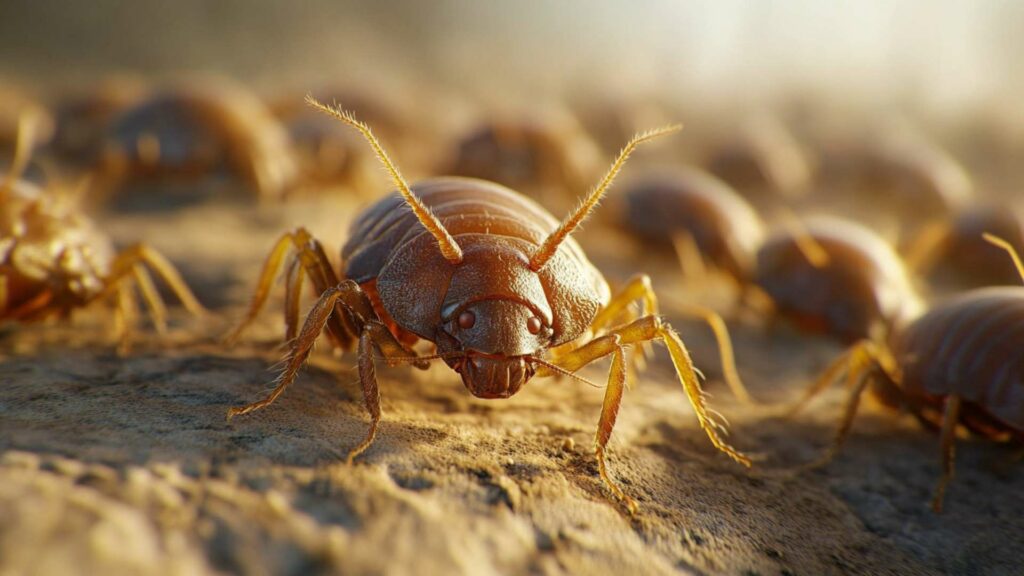
When it comes to identifying bed bug infestations, one of the most significant indicators is the presence of bed bug bites on humans. These bites are usually small, red, and itchy. They often appear in a cluster or a line pattern on exposed areas of the body such as the arms, legs, neck, and face.
However, it’s important to note that not everyone reacts to bed bug bites in the same way; some individuals may not experience any symptoms at all. Bed bug bites can be easily mistaken for mosquito or flea bites.
To differentiate them from other insect bites, there are a few key characteristics to look out for. Firstly, bed bug bites typically form a distinctive pattern since these pests tend to bite multiple times in a row while searching for a suitable blood vessel.
Secondly, unlike mosquito bites that often cause immediate itching and swelling, bed bug bites may take several days before any symptoms appear. If you suspect you have been bitten by a bed bug treatment other bugs, pay attention to whether these bites occur mainly during your sleep or when you spend time in infested areas.
Visual Inspection Techniques for Identifying Bed Bugs in the Home
Apart from examining bite marks on your skin, performing visual inspections within your living space is crucial for early detection and confirmation of a potential bed bug infestation. These nocturnal pests hide during daylight hours but are visible if you know where to look.
Start by inspecting your mattress and box springs thoroughly using a flashlight and magnifying glass if necessary. Look for signs such as tiny blood stains or dark fecal spots left behind by feeding bed bugs.
You might also notice discarded exoskeletons shed by immature nymphs as they grow into adults. Expand your search beyond just the mattress; bed bugs are known to hide in various other areas.
Check the seams, tufts, and labels of your mattress and box springs. Inspect any cracks or crevices in the bed frame, as well as behind headboards and nightstands.
Don’t forget to inspect nearby furniture such as soft chairs or couches, especially if you often nap or sleep on them. By being vigilant and conducting regular visual inspections, you can catch a potential bed bug infestation early on before it spreads throughout your home.
If you suspect an infestation but are unsure about your findings, it’s always best to consult a pest control company or professionals who can conduct a thorough inspection using specialized tools and techniques. Remember that prevention is key when it comes to dealing with bed bugs, as eliminating an infestation can be time-consuming and costly.
Stay tuned for the next section where we will discuss effective control methods to combat these pesky critters.
Non-chemical control methods
Vacuuming and steam cleaning

When it comes to battling bed bugs in your own home, one of the most effective non-chemical methods is vacuuming. Using a vacuum with a strong suction power and a hose attachment, thoroughly vacuum all areas suspected of bed bug infestations.
Pay close attention to cracks and crevices in furniture, baseboards, and along floor edges where these pesky bugs like to hide. Be sure to dispose of the vacuum bag immediately after each use, sealing it tightly in a plastic bag before discarding it outside your home to prevent any potential re-infestation.
Another valuable non-chemical method for combating bed bugs is steam cleaning. Bed bugs cannot survive extreme heat, so using a high-powered steam cleaner can be highly effective in killing them and their eggs on contact.
Steam clean mattresses, box springs, upholstery, and other infested areas at temperatures above 120°F (49°C) for optimal results. Remember to move the steam cleaner slowly over surfaces for better penetration.
Washing bedding and clothing in hot water

To eliminate bed bugs hiding out on your beloved bedding or clothing items, washing them in hot water can make all the difference. Set your washing machine temperature to at least 120°F (49°C) or higher before starting the cycle.
This hot water helps kill any live bed bugs or eggs that may have latched onto your bed linens, or garments. After washing, make sure you dry everything on high heat as well since heat is an enemy of these tiny pests.
Encasing mattresses and box springs with bed bug-proof covers
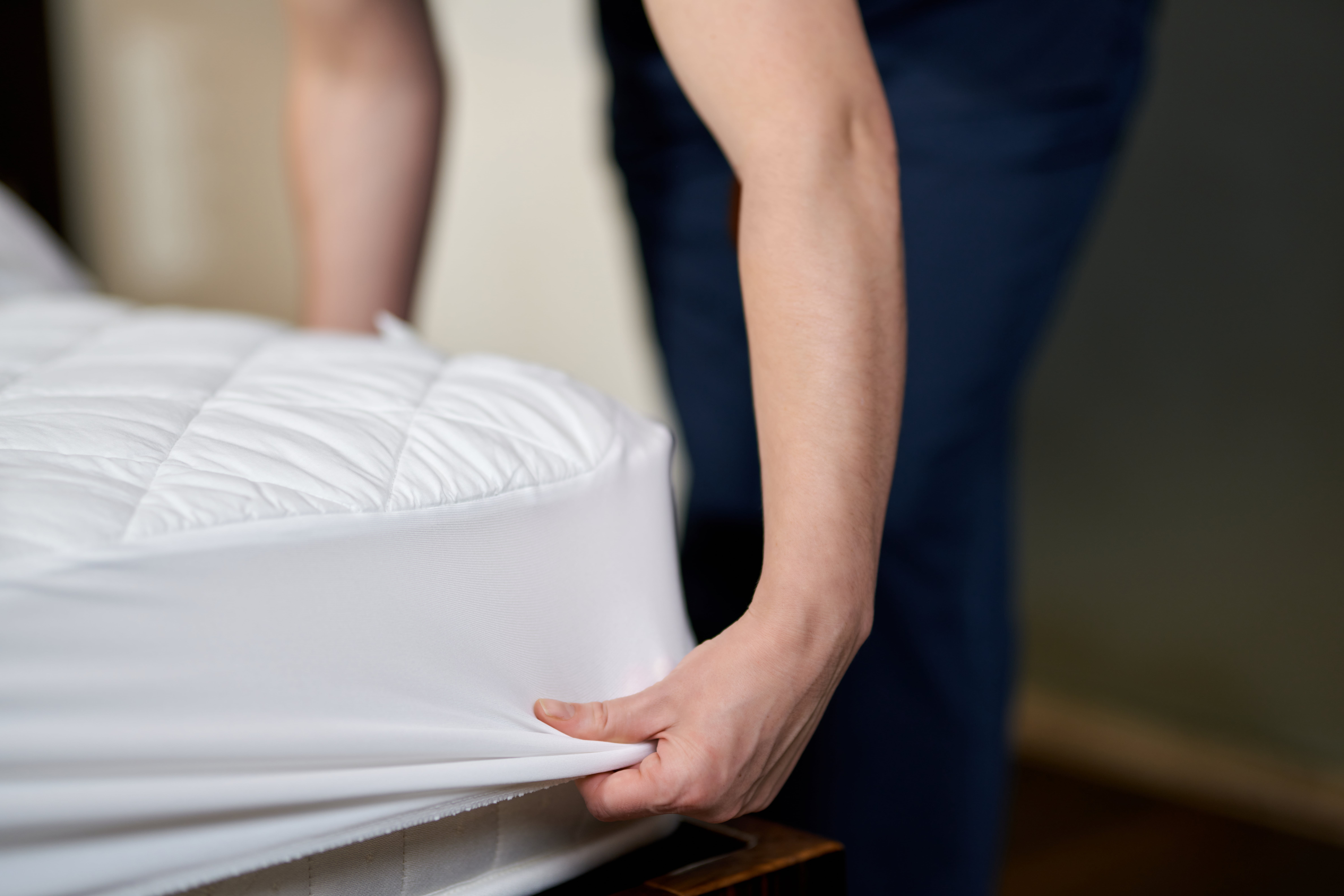
When dealing with a bed bug problem, investing in bed frames or mattress encasements specifically designed to keep these pests out is worth considering. These specially designed covers are made from durable materials that prevent bed bugs from penetrating the surface and infesting your mattress or box spring.
Make sure to choose encasements that are labeled as bedbug-proof and have zippers with tight-fitting seals. By encasing your mattresses and box springs, you create a barrier to tiny insects that denies these unwelcome intruders access to their preferred hiding spots.
Regularly decluttering living spaces
Keeping your living spaces clutter-free is an essential part of preventing bed bug infestations. Bed bugs love to hide in cluttered areas, making it difficult to spot and eradicate them. Regularly decluttering your home will not only help reduce hiding spots for these bugs but also make it easier for you to identify any potential signs of an infestation.
Clear out piles of clothes, stacks of paper, and other objects that can provide a convenient haven for bed bugs. Opt for minimalism in your décor choices, as fewer nooks and crannies mean fewer places for these pests to call home.
Chemical control methods
Insecticide sprays for treating infested areas
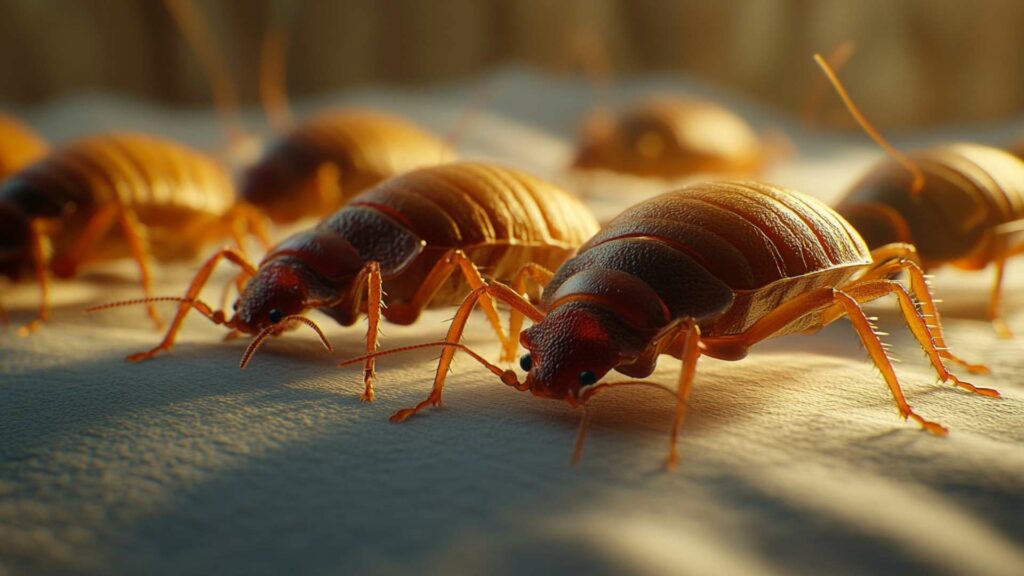
In cases where non-chemical methods alone may not be sufficient, chemical treatments can provide added effectiveness in combatting bed bug infestations. Insecticide sprays specifically formulated for targeting bed bugs are available on the market.
These sprays usually contain pesticides that directly target the nervous systems of these insects, effectively killing them upon contact. When using insecticide sprays, follow the product instructions carefully and apply them only to areas identified as being infested by bed bugs.
Insecticide dust for hard-to-reach areas like cracks and crevices
For those hard-to-reach areas where bed bugs tend to hide, insecticide dust can be an invaluable tool in eliminating these pests from your home. Dust-containing chemicals such as diatomaceous earth or silica gel can be applied to cracks, crevices, and other hidden areas where bed bugs might be lurking. These dust work by physically damaging the protective exoskeleton of the bugs, leading to dehydration and ultimately their demise.
When using insecticide dust, it is important to wear protective gloves, and a mask, and follow all safety instructions provided by the manufacturer. Remember that when dealing with a severe or persistent bed bug problem, it is always advisable to consult professional pest control professionals.
They have access to more potent bed bug treatments and can provide expert guidance on how to effectively eliminate these pests from your home.
Preventing Bed Bug Infestations
Travel Tips to Avoid Bringing Bed Bugs Home
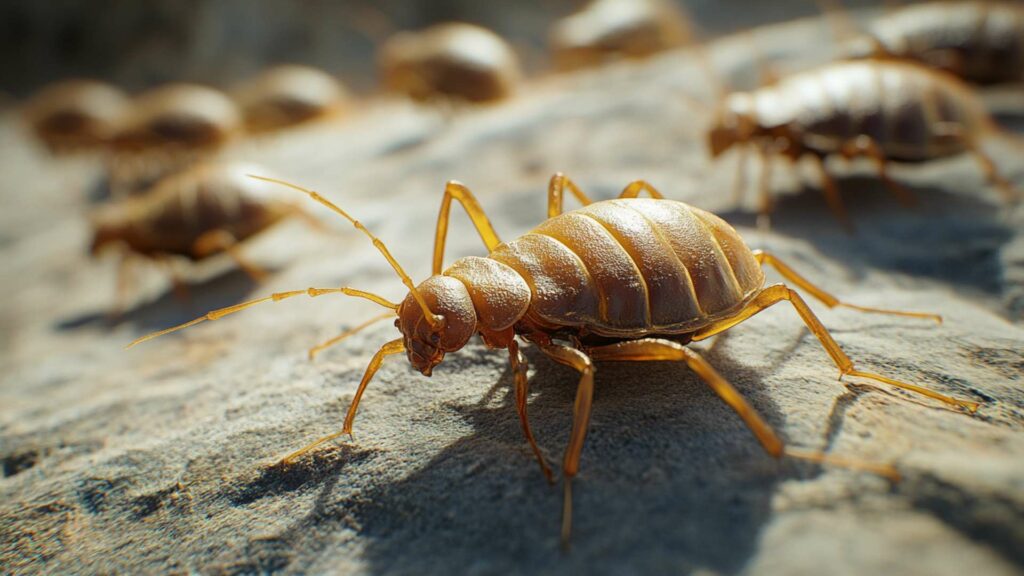
Don’t Let the Bed Bugs Hitch a Ride! When embarking on a journey, whether for business or pleasure, the last thing anyone wants to bring back as a souvenir is a bed bug problem. These elusive pests can find their way into your luggage without you even noticing.
However, with a few precautionary measures in a hotel room, you can greatly reduce the risk of taking these unwanted intruders home. The first line of defense is inspecting hotel rooms before unpacking your luggage.
Take a few moments upon arrival to carefully examine the room for any signs of bed bugs. Start by pulling back the bed sheets, and inspecting the mattress seams, looking for tiny brown stains or shed exoskeletons that resemble apple seeds.
Check out the headboard, nearby furniture, and even behind picture frames where these sneaky bugs love to hide. If you notice any signs of bed bugs, request another room immediately.
Another travel tip is utilizing luggage racks or placing suitcases on hard surfaces rather than carpeted floors or beds. This simple step creates an obstacle that makes it harder for bed bugs to crawl into your luggage rack or belongings.
Additionally, consider keeping your suitcase elevated on a luggage stand away from walls tile floors and furniture overnight – this further reduces the chances of transporting these unwelcome hitchhikers back home with you. Always remember to wash your clothes immediately after returning from a trip using hot water at its highest setting.
This helps kill any potential stowaways kill bed bugs that may have made their way onto your clothing during your travels. It’s equally important to dry them thoroughly in a dryer as heat is lethal to bed bugs at all stages of development.
Home Prevention Measures
Shield Your Castle from Unwanted Intruders! As they say, prevention is better than cure, and this couldn’t be truer when it comes to bed bug control and prevention tips.
Protecting your home from an infestation requires a proactive approach. Here are some effective home prevention measures that will fortify your living space against these blood-sucking pests.
Sealing cracks and crevices in walls, floors, and furniture is essential to deny bed bugs entry points into your home. Inspect your property thoroughly for any potential openings that might serve as gateways for these determined insects.
Use caulk or sealant to close off cracks, crevices, and gaps around baseboards, windows, doors, electrical sockets, and plumbing fixtures. Remember that bed bugs can squeeze through the tiniest of spaces!
Installing door sweeps is another smart move to prevent entry by bed bugs (and other unwanted critters). These simple devices attach to the bottom of doors and create a barrier to keep bugs from slipping through small openings at the floor level.
By sealing off this common access point, you significantly reduce the chances of a bed bug invasion. In addition to sealing up potential entry points, regularly inspecting second-hand furniture before bringing it inside is crucial.
While that vintage armchair or charming dresser may seem like a treasure worth taking home, it could unknowingly harbor hidden bed bugs within its upholstery or seams. Take extra caution to avoid bed bugs by thoroughly examining any used furniture for signs of bed bugs before making a purchase or introducing it into your living space.
By following these travel tips and implementing effective home prevention measures, you’ll be well on your way to creating an environment that discourages bed bugs from calling your humble abode their own. Safeguarding against these persistent pests not only provides peace of mind but also helps ensure a good night’s sleep – uninterrupted by unwelcome bites!
Remember: Stay vigilant in both hotel rooms and at home; it’s always better to be safe than sorry. (Note: For additional information on bed bug prevention in hotels and accommodations, refer to the comprehensive guide to professional bed bug treatment provided by us here.)
Unusual Facts about Bed Bugs
Bed bug reproduction habits: multiple mating partners, traumatic insemination
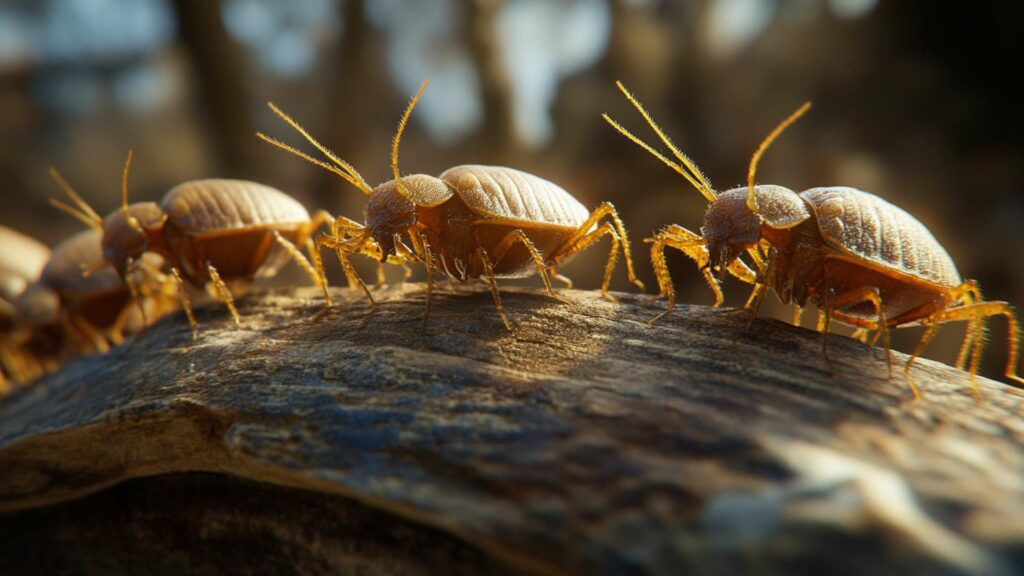
Believe it or not, bed bugs have some pretty unconventional reproductive habits. When it comes to finding a mate, these pesky critters are not monogamous. Male bed bugs often mate with multiple partners during their lifetime.
This behavior ensures genetic diversity within the population and increases their chances of survival. But that’s not the only bizarre aspect of their mating process.
Bed bugs engage in a phenomenon known as traumatic insemination. It may sound like something out of a horror movie, but it’s just another day in the life of these pests.
During mating, the male bed bug pierces the female’s abdomen with his sharp reproductive organ and injects sperm into her body cavity. This unique method allows them to bypass traditional genital structures and increases the chances of successful fertilization.
Surprising places where bed bugs can be found: public transportation, movie theaters
When we think of bed bugs, we often associate them with our beds and bedrooms. However, these resilient creatures can be found in some unexpected places as well.
Public transportation systems such as buses and trains have become hotspots for bed bug infestations due to the high turnover rate of passengers and proximity between individuals. Additionally, movie theaters can also harbor these sneaky insects.
With cozy seats and dark crevices beneath them, they provide an ideal hiding spot for bed bugs during daytime hours when they are not actively feeding on human blood. So next time you’re enjoying a night out at the movies or commuting on public transportation, keep an eye out for any signs of an infestation.
The connection between bed bugs and human body odor
It turns out that your body odor could play a role in attracting those unwanted house guests. Bed bugs have a remarkable ability to detect human odors, particularly the carbon dioxide we exhale while breathing.
They are highly sensitive to the presence of CO2, which helps them locate their next blood meal. But it’s not just the carbon dioxide that bed bugs are drawn to.
They can also detect other chemical compounds in our sweat, such as lactic acid and ammonia, making them even more adept at finding their way to us. So if you’re someone who tends to perspire more or has a stronger body odor, you may inadvertently be attracting these creepy crawlers.
Conclusion
While the facts about being rid of bed bugs may be unusual and even unnerving at times, it’s important not to let fear overshadow practical solutions for prevention and control. By following proper hygiene practices, regularly inspecting your surroundings for signs of bed bugs, and taking necessary precautions when traveling or visiting public places, you can significantly reduce the risk of an infestation. Remember – knowledge is power!
Stay informed about bed bug behavior and habits so that you can protect yourself and your home effectively. With proactive measures in place to control bed bugs, you can sleep soundly without worrying about these persistent pests disrupting your life.
Frequently Asked Questions:
Regular inspection, maintaining cleanliness, reducing clutter, and using bed bug-proof mattress encasements can help keep bed bugs away.
Bed bugs are known to have an aversion to scents like lavender, tea tree oil, and peppermint.
To prevent and stop bed bugs, it is crucial to practice good hygiene, inspect second-hand items before bringing them home, minimize clutter, and promptly address any signs of infestation.
The main cause of bed bugs is usually their introduction into an environment through infested items or furniture, such as luggage, used mattresses, or clothing.
If this article captivated your interest, you might also uncover value in these related compositions:
Vanquishing the Bloodsuckers: A Comprehensive Guide to Bed Bug Extermination Methods

